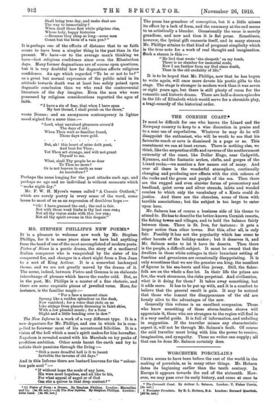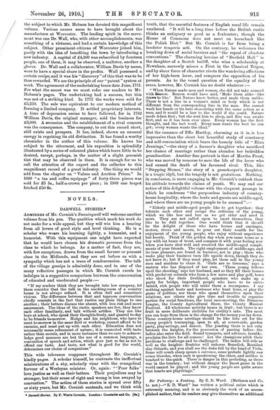WORCESTER PORCELAIN.-I- CHINA seems to have been before the rest
of the world in the making of porcelain, as in many other things. Mr. Hobson dates its beginning earlier than the tenth century. In Europe it appears towards the end of the sixteenth. How- ever, we may pass over its early history, and come at once to
• The Cornwall Coast. By Arthur L. Salmon. London : T. Fisher Unwin. [8s. net.]
t Worcester Porcelain. By B. L. Hobson, B.A. London: Bernard Qnaritch. [03 6s. net.]
the subject to which Mr. Hobson has devoted this magnificent volume. Various causes seem to have brought about the manufacture at Worcester. The leading spirit in the move- ment was one Dr. Wall, who, with other accomplishments, was something of a virtuoso, and had a certain knowledge of this subject. °Other prominent citizens of Worcester joined him, partly with the idea of benefiting the town by introducing a new industry. A capital of £4,500 was subscribed by fourteen people, one of them, it may be observed, a =lister, another a glover. Dr. Wall and a collaborator, William Davis by name, were to have a special share in the profits. Wall possessed a certain recipe, and it was his " discovery" of this that was to be thus rewarded. We see the principle of our " patent " system at work. The agreement of the undertaking bears date June, 1751. For what the secret was we must refer our readers to Mr. Hobson's pages. The undertaking had a success, but this was not of a striking kind. In 1772 the works were sold for £5,250. The sale was equivalent to our modern method of forming a limited company. It settled proprietary interests. A time of depression seems to have followed, for in 1783 William Davis, the original manager, sold the business for £3,000. A secession and the establishment of a rival concern was the consequence. The company, to cut this record short, still exists and prospers. It has, indeed, shown an unusual energy in regaining its old distinction. It has found a worthy chronicler in the author of this volume. He knows his subject to the uttermost, and his exposition is splendidly illustrated by a series of coloured plates which leave little to be desired, except, perhaps, in the matter of a slight greenish tint that may be observed in them. It is enough for 111E1 to call the attention of the expert and the collector to this magnificent record of a great industry. One thing we would add from the chapter on "Values and Auction Prices." In 1669 "a tea and coffee equipage" of forty-three pieces was sold for £5 5s., half-a-crown per piece ; in 1909 one teapot fetched 250 8s.



















































 Previous page
Previous page